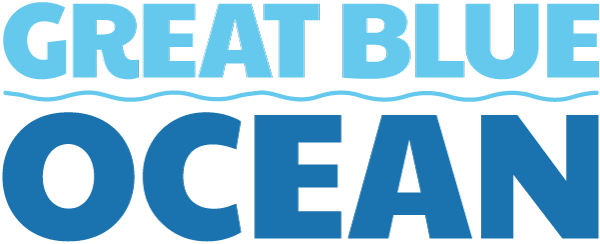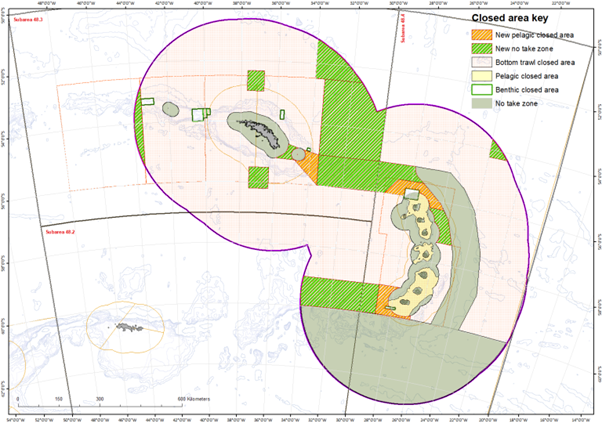“Humpback Highway”
The Government of South Georgia and the South Sandwich Islands (SGSSI), alongside Lord Benyon, UK Minister of State at the Foreign, Commonwealth and Development Office and the Department for Environment, Food and Rural Affairs, have today announced a significant expansion of protections of the frigid and thriving waters surrounding South Georgia and the South Sandwich Islands. This marks the end of a five-year review of protections and is a crucial step in conserving this unique and vital ecosystem.
Based on new research on climate impacts, whale population dynamics, toothfish habitats and penguin foraging, the SGSSI Government has decided to extend full protections across an additional 166,000 km2 – a vast area eight times the size of Wales.
Science-based conservation
When first established in 2012, the SGSSI Government committed to a review of the marine protected area every five years to ensure the continued effectiveness of the conservation measures, and to incorporate the most up to date scientific information. This process of continuous review and strengthening of conservation measures adheres to best practice in marine management and represents yet another example of marine conservation leadership from the remote UK Overseas Territory.
The Great Blue Ocean coalition, made up of six marine conservation NGOs, was proud to contribute to the review process and welcomes the decision to enhance the fully protected area of the MPA by 166,000 bringing approximately 36% (almost half a million square kilometres) of the entire exclusive economic zone (EEZ) under legal no-take protection. Other notable additions to protections include a pelagic closure and restrictions on the speed of vessels, both designed to avoid potential conflict with returning whales.
Map of the South Georgia & the South Sandwich Islands Marine Protected Area, highlighting the new closed areas which have been announced by the SGSSI Commissioner on 26 February 2024.
Harbouring an incredible array of life
SGSSI lies more than 1,700 kilometres (1,050 miles) from the southern tip of South America in a remote expanse of the South Atlantic Ocean. While mostly uninhabited by humans (approximately 20 scientists and government officials operate from South Georgia), the area hosts what could be the single largest concentration of marine species in the world. The islands provide habitat for more than four million Antarctic fur seals, more than 95% of the world’s population—and more than half of the world’s southern elephant seals.
South Georgia has as many as 100 million seabirds, including vast numbers of penguins, albatross, prions, and petrels. The Antarctic’s only songbird, the South Georgia pipit, of which only 6,000 remain, is found only on that island. Zavodovski Island in the South Sandwich Islands has more than one million chinstrap penguins, the largest colony in the world and the South Sandwich Trench, is one of the deepest parts of the ocean (8km and includes thermal vents which are yet to be fully explored). Huge baleen whales including blue, fin and humpback are returning in greater numbers each year, having almost been wiped-out during the period of industrial whaling in the 1900s.

King penguins at South Georgia Island – Paul Nicklen, SeaLegacy
Data-driven decisions
Three key changes influenced the enhancement since the previous five-year review: climate change; the return of baleen whales; and, recent developments in the regional multilateral body responsible for managing fisheries and conservation in the Southern Ocean known as CCAMLR.
- Climate change is impacting the Southern Ocean region faster than anticipated. Antarctic winter sea ice has reached its lowest record, a full million square kilometres below 2022’s levels, a loss greater than the size of Egypt. Due to the rapid shrinking of sea ice, emperor penguins experienced unprecedented breeding failure last year. There is already evidence that climate impacts are affecting the SGSSI ecosystem. Analysis of climate data shows that that rapidly rising sea temperatures in the region correlate with seal population decline in SGSSI – pointing to a loss of krill (their core prey), which need cold waters to survive, as the most likely cause. Such evidence points to the need to apply the precautionary principle to marine conservation – guarding against controllable future threats such as industrial fishing.
- Baleen whales are finally beginning to return in greater numbers to their feeding grounds in the Southern Ocean. Humpback whales are a rare conservation success story. The stock that breeds off Brazil and migrates to feeding grounds around South Georgia and the South Sandwich Islands is now close to being fully recovered (reaching approximately 95% of its pre-industrial population). Considering such whales were originally poached to near extinction from South Georgia, the opportunity to enhance protection to safeguard their return through the designation of whale corridors, was compelling.
- Although CCAMLR has a mandate to conserve the Southern Ocean, and members have agreed upon a framework to deliver a network of MPAs throughout the region, efforts over the past 8 years to protect this critical yet under threat ecosystem have stalled. This is in large part due to increased fishing interest in krill and geopolitical complexities with core members. As such the SGSSI MPA Review process allowed the opportunity for the UK to show vital leadership in the region.
Global leadership
The UK’s flagship marine conservation policy, the Blue Belt, has been an unquestionable international success, with ambitious marine protection efforts driven by local communities from Ascension to Tristan da Cunha, to Pitcairn to St Helena. GBO has been a proud partner and supporter of these efforts, and today’s announcement to enhance protections of SGSSI via designating fully protected corridors for species such as humpback whales, based on the best available science, once again demonstrates the UK’s international leadership in ocean conservation.
Adrian Gahan, Chair of the Great Blue Ocean coalition, said:
“This is the most biodiverse place in all of the UK’s 16 Overseas Territories. While regional whale recovery is impressive, the ever-increasing demand for krill fishing in the Antarctic is alarming, so we congratulate the Government of South Georgia and the South Sandwich Islands and FCDO Minister Lord Benyon for making these significant enhancements to what is already a world-class protected area.”
Johnny Briggs, who leads the Pew Bertarelli Ocean Legacy Project’s work in UK waters, said:
“Amid dual threats of climate change and biodiversity loss, this is a pivotal step towards safeguarding a global wildlife hotspot. Through this latest five-year review of the MPA, the government has demonstrated best practice in marine management—applying new science to protect crucial migratory corridors for species such as baleen whales and toothfish.”
Great Blue Ocean coalition (GBO)
The Great Blue Ocean coalition is made up of the Blue Marine Foundation, Greenpeace UK, The Marine Conservation Society (MCS), The Pew Trusts, The Royal Society for the Protection of Birds (RSPB) and The Zoological Society of London (ZSL). Our combined members represent over two million people. We work with partners in the UK Overseas Territories to enhance marine conservation in these exceptional places. Our combined voice helps raise public awareness of the need for ambitious international marine protection if we are to save the global ocean from ecosystem collapse. https://greatblueocean.org/

